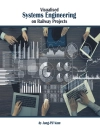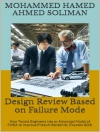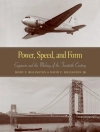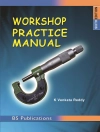The book takes time as the axis, selecting 98 bridges (or bridge groups) across the country and 7 representative bridges out of the country, reflecting the steps and development of China’s bridge construction in related majors and engineering technicians in colleges and universities. This book aims to let the general public understand the arduous history of China’s bridge construction and the rapid development of China’s bridge construction without the country’s economic development, strength, and hard work of the bridge people. It is also hoped that the public will enjoy the convenience of bridges, highways, railroads, and urban roads and at the same time enhance their awareness of bridge knowledge, knowledge, love, and scientific use of bridges. This book is used by the general public to understand the development of China’s bridge construction, but also as a reference book for teachers and students of bridge engineering-related majors and engineering technicians in colleges and universities.
Tabla de materias
Chapter 1 The Origin and Development of Bridges.- Chapter 2 Using Foreign Experience for Reference and Laying a Foundation for Further Bridge Development.- Chapter 3 Taking Full Advantage of Local Materials and Innovating in Bridge Technology.- Chapter 4 Learning Advanced Technology and Starting Rising.- Chapter 5 Rapid Development and Becoming a World Power in the Number of Bridges. Chapter 6 Making Technological Breakthrough and Becoming a World Power in Bridge Technology.- Chapter 7 Entering Foreign Lands and Becoming Established on the World Stage.- Chapter 8 Looking Back at the Past whilst Looking Forward to the Future.
Sobre el autor
Zhongfu Xiang is a Professor and a Doctoral Supervisor of the Chongqing Jiaotong University. Prof. Xiang is also an Academic and Technical Leader of Bridges in Chongqing, an Executive Director of China Highway Society Bridge and Structure Branch, an Editorial Board Director of Chongqing Bridges, and an Editorial Board Member of Bridges (Journal of Chongqing Jiaotong University). He has been engaged in bridge engineering teaching, scientific research, and technical consultation services for several years, and focused on bridge design theory research, bridge construction and control technology, engineering inspection, assessment and reinforcement. Prof. Xiang undertook and participated in more than 10 national and provincial scientific research projects, presided over and participated in more than 10 world-class and key projects such as the Chongqing Chaotianmen Yangtze River Bridge, and the Chongqing Yangtze River Bridge Duplicate Bridge. He published more than 10 books such as Bridge Construction Control Technology (the first edition), Research and Practice of Extra-large Span Continuous Rigid Bridge, and Research and Practice of Large Span Stone Arch Bridge (selected as one of the 100 original science and technology books in China).
Wei Xu engaged in bridge design for 37 years and participated in the design of many representative bridges in China.
Anshuang Liu is the Bridge Chief Engineer of TYLIN.
Fanchao Meng is the Chief Designer of the Hong Kong-Zhuhai-Macao Bridge Design, presided over, organized, and participated in the completion of more than 20 well-known ultra-large-scale works in bridge engineering design in both China and abroad.












